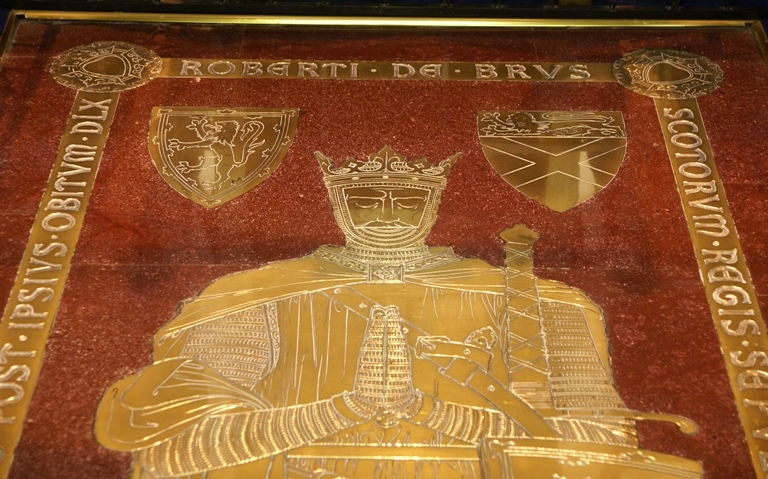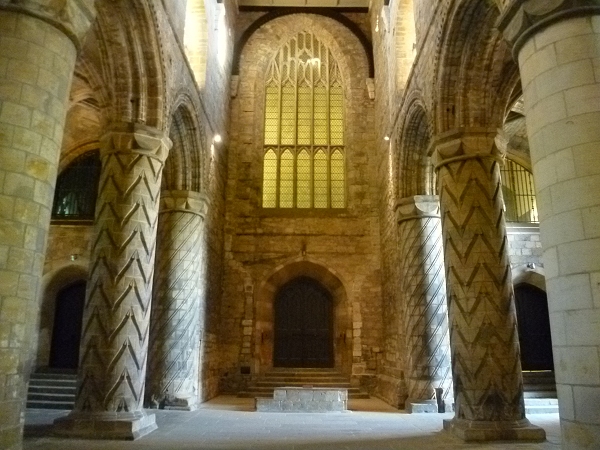
Robin finds me and tells me I have to go into the church, that the stained glass is magnificent. I take a quick tour, gaping not only at the stained glass windows and panels, but the carving of the pulpit, lectern and choir stalls. Robin's told me to take a good look at the pulpit and directly beneath it I spy a huge brass plaque, which on closer examination turns out to be the tomb of Robert the Bruce.
King Robert was buried at Dunfermline in 1320, but over the centuries the exact location became obscure. In 1818 when the ground was being cleared in preparation for the building of the new Abbey church workmen came across a vault. When opened, the vault was found to be built of polished masonry. Within the vault was an oak coffin covered with two sheets of lead. Inside the coffin lay a shroud of gold cloth.
After an examination the tomb was closed again until the following year when an official inspection was made. It was found that the breastbone of the body had been severed in order that the heart might be removed in compliance with Bruce's expressed wish that it should be taken to the Holy Land. Bruce's heart was buried at Melrose Abbey in the borders.
That same year the remains were carefully and ceremoniously re-interred between the transepts. The memorial brass plaque was added in 1889. The Latin inscription translates to:
The tomb of Robert the Bruce, King of Scots, fortunately discovered among the ruins in 1818, has been anew marked by this brass in the 560th year after his death.
We wander through the graveyard, finding Margaret Wallace's grave beneath a thorn tree and marked with a stone and vase holding a thistle. Near the gate is yet another plaque, affixed to the wall, showing a very young William Wallace and his mother. We stop to take quick shots of this before heading back out to the pedestrian area of a very crowded and bustling Dunfermline.

During the Scottish Reformation, the abbey church was sacked in March 1560. Some parts of the abbey infrastructure still remain, principally the vast refectory and rooms over the gatehouse which was part of the former city wall.
The nave was also spared and it was repaired in 1570 by Robert Drummond of Carnock. It served as the parish church till the 19th century, and now forms the vestibule of a new church. This edifice, in the Perpendicular style, opened for public worship in 1821, occupies the site of the ancient chancel and transepts, though differing in style and proportions from the original structure.
Also of the monastery there still remains the south wall of the refectory, with a fine window. Next to the abbey is the ruin of Dunfermline Palace, also part of the original abbey complex and connected to it via the gatehouse.
Read more about Dunfermline Abbey at Wikipedia